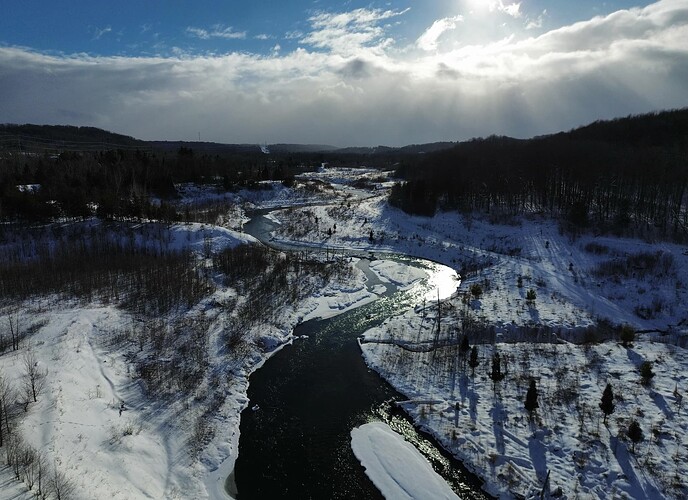I’m new to drones and just got my first one. Any tips for a beginner? I’d love to hear your advice for flying, taking photos, or anything else I should know!
Biggest tip: don’t crash.
-
Get out and fly as much as you can.
-
Set up your custom buttons in a way that feels natural to you.
-
If you’re flying low, always make sure you’re above any trees or power lines. Sometimes taller trees can sneak up on you, especially when you’re circling an object. Be aware of your surroundings.
-
Watch out for birds like eagles or hawks—they can get territorial. If one goes for your drone, throttle UP because they can’t climb as fast as they can dive.
@Remi
#4 is solid advice!
@Remi
Totally agree with #4. I always bring binoculars because we have bald eagles everywhere near the river where I live. Their nests are massive, and they don’t like drones.
Turn on zebra stripes to highlight overexposed areas when filming.
If DJI Care Refresh is available for your drone, get it. I’ve already had to replace my Mini 4 Pro twice since December. Crashed it both times, and for $65, they sent me a brand-new drone in about a week.
@Lyle
This is probably the best advice here!
Don’t fly too close to the sun.
Set your return-to-home height higher than any obstacles around you. Always point your RC antenna toward the drone for better signal. Do a range test in your area to get a feel for the limits, but check YouTube first for your model’s range.
If a forced landing happens far away, point the camera straight down so you can see where it lands. Use sport mode to return in strong winds. And don’t store your batteries fully charged if you’re not flying for a few days—it stresses the battery.
Also, branches and wires can avoid detection by sensors, so fly carefully even if you think you’re covered.
Always check the weather and wind conditions before flying.
Avoid flying toward the sun unless you’re using good ND filters or it’s the right time of day. Experience is the best teacher, so get out there and practice. Also, turn on settings to highlight overexposure.
Try hyperlapse shots with slow movements and long exposure times. The results can be amazing.
I’m new too. I found it helpful to practice basic controls in an open field first. Then I started doing little photo missions to learn how to adjust camera settings and use ND filters. I’ve also been doing screen recordings of my flights and reviewing them with the AirData UAV app. It’s been a fun way to learn!
- Use ND filters for bright conditions.
- Use polarized filters for water or reflective surfaces.
Your photos look great!
Water is bad, and trees are worse. That about sums it up.
Also, get some lens filters and have fun flying!
Read the manual, do the DJI training, and know how to land manually if auto-landing fails. Always check the maximum wind your drone can handle and verify conditions before flying.
If you crash, I do drone repairs. Check out dronesetc.us.
Avoid flying directly into obstacles like trees, wires, or buildings. It’s better to fly above or around them.

